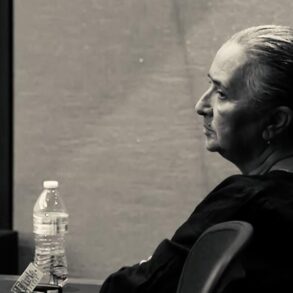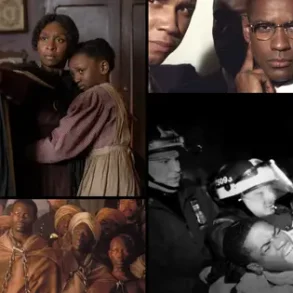This article explores the wrongful conviction of David Hehn and the unresolved murder of Gay Lynn Dixon, revealing systemic failures in forensic evidence handling and the justice system’s pursuit of true justice.
In 1982, the small town of Fort Collins, Colorado, was shaken by the brutal murder of 17-year-old Gay Lynn Dixon, a tragedy that would haunt the community for decades. Nearly 30 years later, the case was reopened, and David Hehn, a man who had been living his life quietly in the same town, was arrested and convicted for the crime. Hehn has maintained his innocence ever since, claiming that the evidence used to convict him—largely based on DNA—was flawed.
At the center of this story lies not only the tragic death of a young woman but also a legal system that, according to critics, failed both the victim and the man wrongfully convicted of her murder. The DNA evidence that was supposed to bring clarity to this cold case has now become a focal point of a larger scandal involving the Colorado Bureau of Investigation (CBI) and its handling of crucial forensic data.
This article seeks to explore how a flawed justice system led to the loss of two lives: one brutally cut short and another stolen by a wrongful conviction. Through examining the tragic story of Gay Lynn Dixon, the wrongful conviction of David Hehn, and the role of a DNA scandal that rocked the state of Colorado, we aim to uncover the truth behind this dual tragedy and the broader implications for the justice system.
by Justyna Madenska
The Murder of Gay Lynn Dixon
In January 1982, Fort Collins was gripped by the shocking murder of Gay Lynn Dixon, a bright 17-year-old whose life was brutally taken. Dixon had attended a birthday party on the night of January 29, a gathering with about 200 people in attendance. She was last seen alive that night, but by the next day, her lifeless body was discovered in a remote area along Rist Canyon Road, 16 miles west of Fort Collins. She had been beaten, her jaw broken, and shot multiple times in the head.
The investigation into Dixon’s death began immediately, but from the start, it was plagued by missteps. Despite the presence of so many people at the party, key witnesses were not thoroughly questioned. The trail quickly went cold, and for years, her family was left without answers. The brutal nature of the crime and the lack of resolution hung over the community, creating a sense of unease and frustration as the years passed.
The case remained unsolved for nearly three decades, leaving Gay Lynn Dixon’s family and the town in anguish. Rumors swirled, and suspicions were cast on several individuals, but none of the early leads yielded results. In 2008, the Larimer County Sheriff’s Office decided to reopen the case, hoping that advancements in DNA technology could finally provide answers. It was then that the focus shifted to David Hehn, a man who had been at the party that night but had never been a suspect during the original investigation.
Despite renewed efforts, the case’s unresolved nature lingered for nearly 30 years. For Gay Lynn Dixon’s family, the lack of closure was unbearable. They had lost a daughter and sister, but justice for her remained out of reach. It wasn’t until Hehn’s arrest in 2010 that the case seemed to be heading toward resolution—though, as time would reveal, that resolution would be far more complicated than anyone had anticipated.
The Arrest and Conviction of David Hehn
In 2010, almost three decades after the murder of Gay Lynn Dixon, the case took a significant turn when 46-year-old David Hehn was arrested for her murder. Hehn had attended the same birthday party as Dixon the night she was killed, but at the time of the original investigation in 1982, he was never considered a suspect. It wasn’t until advancements in DNA technology and a renewed investigation in 2008 that his name resurfaced in connection to the crime.
Hehn’s arrest shocked many who knew him. He had lived in the community for years without suspicion, working and maintaining relationships like any other law-abiding citizen. But law enforcement believed they had finally found the man responsible for the heinous crime based on new DNA evidence found at the scene. The case quickly moved to trial in 2011.
At the trial, the prosecution presented DNA evidence as the linchpin of their case against Hehn. The jury heard testimony from a Colorado Bureau of Investigation (CBI) expert named Yvonne Missy Woods, who testified that DNA found on Gay Lynn Dixon’s body matched Hehn’s. This testimony was pivotal in swaying the jury, as DNA evidence is often seen as a highly reliable form of forensic proof. Woods’ testimony was bolstered by the lack of strong alibis or alternative explanations for Hehn’s involvement in the case.
On June 27, 2011, after days of deliberation, the jury returned a guilty verdict on all charges, including first-degree murder and second-degree kidnapping. David Hehn was sentenced to life in prison without the possibility of parole. His conviction seemed to bring closure to the long-unsolved murder, but to Hehn and his supporters, it marked the beginning of a different kind of fight—the fight to prove his innocence.
Throughout the trial, Hehn maintained that he had nothing to do with Dixon’s death. He recounted the night in question, explaining that he had simply given Dixon a ride and had left her with his brother before going home. He expressed confusion and disbelief at how he had become the prime suspect so many years later.
For Hehn, the conviction was not just a miscarriage of justice but a devastating blow that tore him away from his life, his family, and his future. Over the years, he would continue to proclaim his innocence, relentlessly fighting the legal system in hopes of one day overturning the verdict. But as Hehn would soon discover, proving his innocence would be an uphill battle against a system that had already decided his fate.
The Role of DNA Evidence and Yvonne Woods’ Testimony
At the heart of David Hehn’s conviction lay the DNA evidence presented during his trial, evidence that prosecutors and the jury relied on to link him to the murder of Gay Lynn Dixon. In the years since the crime, DNA testing had become a powerful tool for law enforcement, and it was this technological advancement that seemingly brought new life to the cold case. However, the reliability of this evidence—and the testimony of the key expert witness, Yvonne Missy Woods—would later come into serious question.
Yvonne Missy Woods, a forensic expert from the Colorado Bureau of Investigation (CBI), was brought in as the prosecution’s primary expert witness on DNA analysis. Her testimony was decisive: she claimed that DNA recovered from the crime scene matched David Hehn’s, a connection that became the cornerstone of the prosecution’s argument. Woods had a reputation as one of the CBI’s top analysts and was often referred to as the “golden child” of the department for her expertise. Her testimony held significant weight with the jury, who viewed the DNA evidence as irrefutable proof of Hehn’s guilt.
However, what the jury did not know—and what would later come to light—was that Woods was far from the reliable expert she was portrayed to be. Years after Hehn’s conviction, a scandal erupted involving Woods and her mishandling of DNA evidence in multiple cases. It was revealed that she had manipulated results, cut corners in her analysis, and even exaggerated her qualifications to gain recognition and advance her career. This misconduct not only called Hehn’s conviction into question but also put the integrity of hundreds of other cases at risk.
The extent of Woods’ involvement in the mishandling of evidence was staggering. Investigations uncovered that her questionable practices had affected hundreds of cases, potentially leading to wrongful convictions based on faulty or fabricated DNA evidence. In Hehn’s case, her testimony had been critical in securing the conviction, yet it became clear that the processes and conclusions she presented were deeply flawed.
The DNA scandal that emerged from Woods’ actions rocked the CBI and tarnished the public’s trust in forensic evidence. It also highlighted the dangers of over-reliance on forensic testimony without proper checks and balances. In Hehn’s case, the DNA evidence was treated as the ultimate proof of guilt, but the procedures used to obtain and interpret that evidence were riddled with inconsistencies.
As the scandal unfolded, Hehn’s legal team and supporters grew more vocal in their efforts to have his case re-examined. They argued that the DNA evidence, which had seemed so compelling during the trial, was now tainted by Woods’ involvement. This revelation opened the door to the possibility that Hehn’s conviction had been based on faulty evidence, raising serious concerns about whether justice had truly been served.
The unraveling of Yvonne Woods’ credibility and the doubts cast on the DNA evidence became central to Hehn’s ongoing fight for exoneration. Yet, despite these revelations, overturning a conviction—especially one based on DNA evidence—proved to be a monumental challenge. For Hehn, the DNA scandal offered a glimmer of hope, but it also underscored just how deeply flawed the justice system could be when critical evidence is mishandled.
The Failures of the Justice System
The conviction of David Hehn not only raises questions about the reliability of DNA evidence but also highlights a series of failures within the broader justice system that contributed to this dual tragedy. From investigative oversights to judicial bias, the case of Gay Lynn Dixon’s murder is riddled with examples of how the system can fail both the victim and the accused.
Investigative Shortcomings
The original investigation into Dixon’s murder in 1982 was marred by a lack of thoroughness and follow-up. Key witnesses who attended the birthday party on the night of Dixon’s murder were not properly questioned, and significant leads were left unexplored. One of the most glaring examples of this failure was the police’s initial focus on Dixon’s then-boyfriend, Martin Fry, who had a tumultuous relationship with her. Despite Fry being a person of interest early in the investigation, authorities did not pursue him with the rigor that was required, and he was never charged.
Furthermore, when the case was reopened in 2008, investigators failed to take into account all the evidence that had surfaced over the years. One piece of crucial evidence, a letter that allegedly named alternative suspects and declared Hehn’s innocence, was never introduced during his trial. According to Hehn’s supporters, the letter could have dramatically altered the course of the trial if it had been properly investigated and presented in court. The failure to consider this evidence points to a pattern of negligence that plagued the investigation from the start.
Judicial Bias
Compounding the investigative errors was the role of the presiding judge, Gregory M. Lammons, whose involvement in the case has been criticized for potential bias. Judge Lammons had a longstanding connection to the Hehn family, raising concerns about whether he should have recused himself from the case. Despite this personal connection, Lammons did not step down and instead dismissed multiple motions filed by Hehn’s defense team during the trial and post-conviction proceedings.
Judge Lammons’ fairness was further questioned in 2022, when an evaluation by the Judicial Performance Commission revealed that he had scored below average in fairness compared to other district judges. This evaluation, coupled with his dismissal of Hehn’s post-conviction claims, cast doubt on the impartiality of the judicial process. It is reasonable to ask whether Hehn received a fair trial in a system where the judge may have been compromised.
Impact of the DNA Scandal
The DNA scandal involving Yvonne Missy Woods and the CBI only deepened the concerns about the justice system’s failures. The mishandling of forensic evidence by Woods, who had testified at Hehn’s trial, undermined the very foundation of his conviction. As more details emerged about Woods’ misconduct, it became clear that the procedures used to collect, analyze, and present DNA evidence were far from flawless. This revelation not only cast doubt on Hehn’s conviction but also shook public confidence in the reliability of forensic evidence more broadly.
The legal system is supposed to safeguard the rights of individuals and ensure that justice is served, yet in Hehn’s case, it appears that the system worked against him at every turn. From the flawed investigation to the compromised testimony of a key witness, the justice system failed to deliver the fairness and transparency that both the victim and the accused deserved.
As Hehn continues to fight for exoneration, his case serves as a stark reminder of the systemic issues that can lead to wrongful convictions. The failures of the justice system—whether through negligence, bias, or mishandling of evidence—have far-reaching consequences, leaving victims like Dixon without true justice and the wrongfully convicted like Hehn to navigate an uphill battle for freedom.
Two Victims of the Same Broken System
In the tragic case of Gay Lynn Dixon’s murder and the wrongful conviction of David Hehn, the justice system has failed not just one individual, but two. Both Dixon and Hehn are victims of a flawed process that left one life brutally ended and another unjustly imprisoned. Their stories, though vastly different in circumstance, are intertwined in a way that underscores the failures of the system designed to protect them.
Gay Lynn Dixon: A Life Taken Too Soon
Gay Lynn Dixon was a 17-year-old girl with her entire life ahead of her when she was murdered in January 1982. For nearly three decades, her family lived with the unbearable pain of not knowing who was responsible for her death. They placed their trust in the legal system to find answers, but the investigation into her murder was fraught with mistakes. Key witnesses were never properly questioned, and early leads went cold as law enforcement failed to thoroughly pursue every possible angle.
Even after the case was reopened in 2008 and Hehn was arrested, the family of Dixon did not find the closure they had hoped for. Although a conviction was secured, the discovery of the DNA scandal and the questionable handling of evidence cast doubt on whether the true perpetrator had been caught. For Dixon’s family, justice remains elusive. They have not only lost their daughter but have also been denied the certainty that the person responsible for her death has been brought to justice.
David Hehn: A Life Stolen by Wrongful Conviction
On the other side of this tragedy is David Hehn, a man who has spent over a decade behind bars for a crime he insists he did not commit. Hehn’s life, much like Dixon’s, was irrevocably altered by a broken system. His wrongful conviction, based largely on flawed DNA evidence, is a stark example of how the justice system can fail the very people it is supposed to protect. While Hehn was not the direct victim of violence, he has suffered years of imprisonment, separation from his family, and the loss of his future.
Hehn’s case highlights the devastating consequences of wrongful convictions. His fight for exoneration has been long and arduous, as the legal system is notoriously slow to admit its mistakes. Even with the revelation of Yvonne Missy Woods’ misconduct and the growing doubts about the validity of the evidence used to convict him, Hehn remains incarcerated, trapped in a legal quagmire that offers little hope for a swift resolution.
Dual Tragedy
The tragic reality of this case is that the justice system failed both Dixon and Hehn. For Dixon, it failed to find the true perpetrator of her murder, leaving her family in a state of perpetual grief and uncertainty. For Hehn, it failed to protect him from a wrongful conviction, robbing him of his freedom and his life outside of prison walls. Both individuals, in different ways, became victims of a flawed system that prioritizes quick convictions over thorough and fair investigations.
This dual tragedy forces us to confront the uncomfortable truth that the justice system can sometimes do more harm than good. It can allow true criminals to go free while imprisoning the innocent, leaving families and communities devastated in its wake. In the case of Gay Lynn Dixon and David Hehn, the system has so far been unable to deliver justice for either of them.
As we reflect on the lives lost and damaged by this case, it becomes clear that true justice is about more than convicting someone for a crime. It is about ensuring that the right person is held accountable and that the innocent are not punished for the mistakes of the system. Until both Dixon’s family and Hehn receive the closure and justice they deserve, this case will remain a haunting reminder of the deep flaws within our justice system.
The Fight for Justice
Despite the conviction of David Hehn for the murder of Gay Lynn Dixon, the fight for justice in this case is far from over. For both Hehn and the Dixon family, the search for truth continues as new revelations about the mishandling of evidence and the systemic failures of the justice system come to light. At the heart of this ongoing battle is the question of whether justice has truly been served—for Dixon, whose murderer may still be free, and for Hehn, who remains imprisoned for a crime he maintains he did not commit.
Current Efforts to Overturn Hehn’s Conviction
Hehn’s legal team and supporters, including the Innocence Project, have been working tirelessly to have his case re-examined in light of the DNA scandal that implicated Yvonne Missy Woods. The discovery that Woods had mishandled and potentially fabricated forensic evidence in multiple cases has cast serious doubt on the validity of Hehn’s conviction. As a result, efforts to secure a new trial or appeal his case have intensified.
One of the central arguments in Hehn’s defense is the fact that the DNA evidence used to convict him may not have been properly handled or analyzed. Woods’ credibility as a key witness has been irreparably damaged, and the possibility that she presented false or exaggerated testimony during Hehn’s trial raises significant concerns about the fairness of the proceedings. With this new information, Hehn’s legal team is pushing for a full re-evaluation of the DNA evidence, as well as the inclusion of previously ignored evidence, such as the letter that allegedly named alternative suspects.
Despite these efforts, the legal process for overturning a wrongful conviction is notoriously slow and difficult. Hehn’s supporters face the challenge of navigating a system that is often reluctant to revisit past convictions, even in the face of compelling new evidence. For Hehn, the fight for exoneration has become a battle not only against the original conviction but also against the legal inertia that makes it difficult to correct judicial errors.
Unanswered Questions About the Case
The conviction of David Hehn has done little to resolve many of the lingering questions surrounding Gay Lynn Dixon’s murder. Key aspects of the case remain unresolved, including the involvement of other potential suspects. One of the most significant unanswered questions is the role of Martin Fry, Dixon’s boyfriend at the time, who had a history of a volatile relationship with her. Despite being an early suspect, Fry was never thoroughly investigated or charged, leaving many to wonder whether he might have played a role in her death.
Additionally, the existence of the letter that was reportedly sent to Hehn’s attorney during the trial, which named three other individuals who should have been investigated, raises even more doubts about the thoroughness of the original investigation. The failure to present this letter in court represents a missed opportunity to explore alternative explanations for Dixon’s murder and calls into question the completeness of the case against Hehn.
As the fight for justice continues, these unanswered questions weigh heavily on both Hehn’s supporters and Dixon’s family. For Dixon’s family, the uncertainty surrounding the true identity of her killer means that justice has yet to be fully realized. For Hehn, the existence of alternative suspects and evidence that was never properly investigated represents a lifeline in his quest to prove his innocence.
The Search for Truth and Accountability
The fight for justice in the case of Gay Lynn Dixon and David Hehn is about more than just correcting a single wrongful conviction—it is about addressing the broader issues within the criminal justice system that allowed this situation to occur in the first place. The mishandling of DNA evidence, the failure to thoroughly investigate key leads, and the potential bias of the presiding judge all point to systemic problems that go beyond the specifics of this case.
Advocates for Hehn are not only seeking his exoneration but also calling for greater accountability within the justice system. They argue that the procedures and safeguards in place to ensure fair trials and accurate verdicts need to be strengthened to prevent future miscarriages of justice. In particular, the reliance on forensic evidence like DNA, while valuable, must be carefully scrutinized to ensure that it is being collected and analyzed properly. The scandal involving Yvonne Missy Woods highlights the dangers of placing too much trust in experts without proper oversight or accountability.
For both Hehn and Dixon’s family, the search for truth is ongoing. The legal battles may take years to resolve, but the hope remains that, eventually, justice will be served. For Hehn, that means proving his innocence and regaining his freedom. For Dixon’s family, it means finding the real perpetrator of her murder and finally achieving the closure they have sought for so long.
Conclusion
The tragic murder of Gay Lynn Dixon and the wrongful conviction of David Hehn represent the dual failures of a justice system that is meant to protect the innocent and deliver closure for victims. In this case, the system has failed on both fronts. Dixon’s family remains without true justice, as serious doubts about the conviction of Hehn continue to surface. Meanwhile, Hehn, a man who has maintained his innocence for over a decade, remains imprisoned for a crime he insists he did not commit.
The DNA evidence, once heralded as the key to solving cold cases, has become the source of controversy and skepticism. The involvement of Yvonne Missy Woods in mishandling forensic evidence has cast a long shadow over Hehn’s conviction, raising important questions about the integrity of the investigation and the fairness of the trial. This case serves as a stark reminder of the dangers of relying too heavily on forensic science without proper checks and balances, as well as the need for greater accountability in the criminal justice system.
As the fight for justice continues, it is important to remember that this case is about more than just one wrongful conviction. It is about ensuring that the true perpetrator of Dixon’s murder is found and that Hehn is given a fair opportunity to prove his innocence. It is about addressing the broader systemic issues that allow such tragedies to occur—issues that can impact any individual caught in the crosshairs of a flawed system.
Both Dixon and Hehn deserve justice. For Dixon, justice means finding the person responsible for her untimely death and bringing them to account. For Hehn, justice means regaining the freedom he has been unjustly denied for so many years. Until both of these outcomes are achieved, the case of Gay Lynn Dixon and David Hehn will remain a sobering example of how easily the scales of justice can tip in the wrong direction.
The road to justice is often long and difficult, but it is a journey worth taking. For the sake of both victims and those wrongfully accused, we must continue to push for transparency, accountability, and fairness in our legal system. Only then can we hope to prevent future miscarriages of justice and ensure that those who have been wronged are finally made whole.







